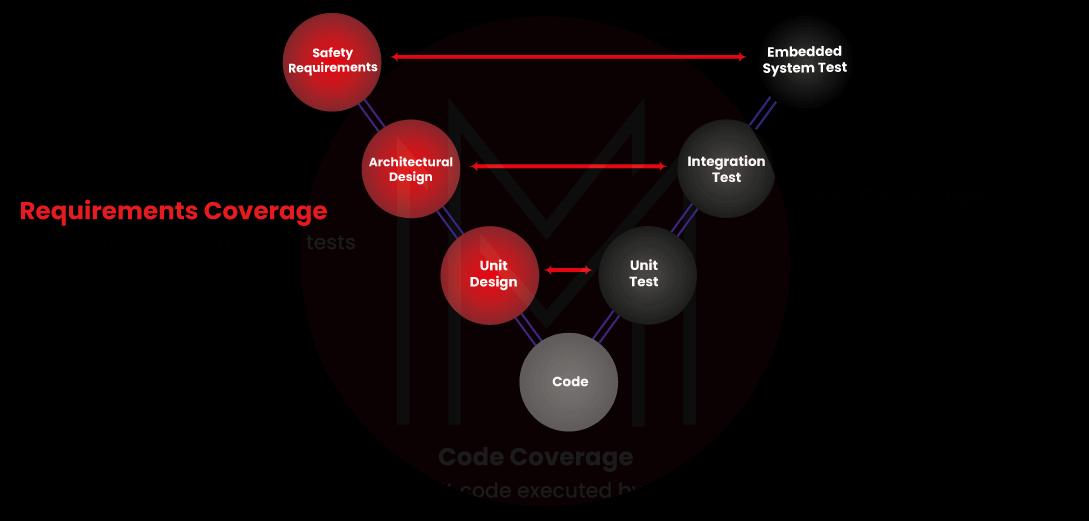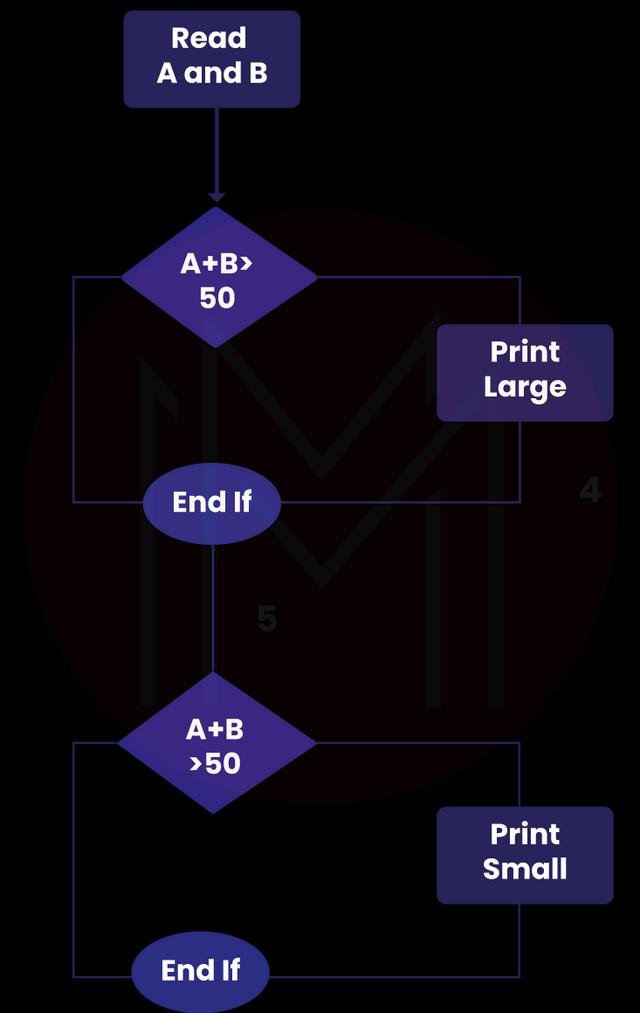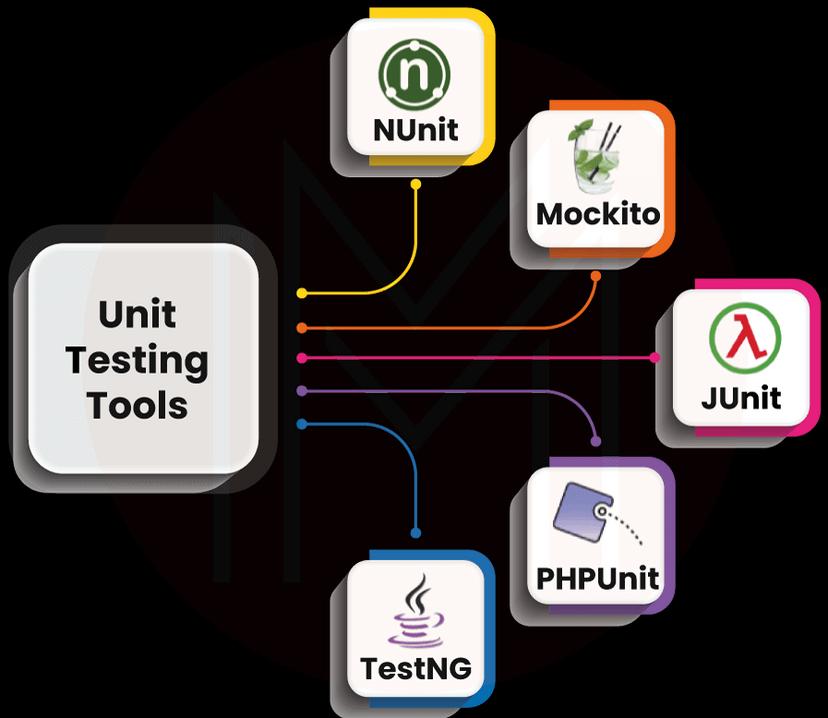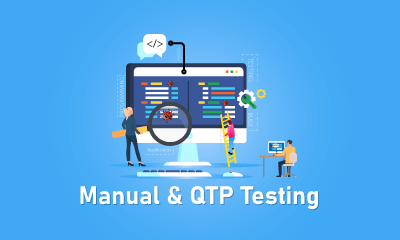- Home
- Blog
- Quality Assurance
- Unit Testing Interview Questions

Unit Testing is a method for testing software in which individual pieces of software, such as groups of program modules, usage procedures, and operating procedures, are tested to see if they can be used.
Unit testing has so many benefits, so it's easy to guess how much demand there will be for these professionals on the market. Now, it is very important that you understand the unit testing interview questions well before you go to the interview. To make it easier to understand, we've put the questions into the following groups:
Top 10 Frequently Asked Unit Testing Interview Questions and Answers
- What is unit testing?
- What different kinds of software unit testing are there?
- Describe the Junit testing framework.
- What does unit testing for a software application accomplish?
- What is feigning?
- How do you calculate the code's cyclomatic complexity for unit test cases?
- Code Coverage: What Is It?
- Why was unit testing necessary to work with other testing types?
- Which method is used for unit testing?
- How do you write a unit test case?
Unit Testing Interview Questions For freshers
1. What is Unit Testing?
A software application's independent parts are tested during the development stage using unit testing. The procedure, function, and other things are all examples of independent modules. Before the integration testing, developers and testers perform unit testing jointly. If necessary, they must also write unit test cases.
| If you want to enrich your career and become a professional in QA, then visit Mindmajix - a global online training platform: "QA Training" This course will help you to achieve excellence in this domain |
2. How many phases are there in a Unit Test case in total?
A unit test case's operation can be broken down into three phases. It will initialize the particular module of the software program you wish to test in the first stage. It will run the test case in the subsequent stage. It will ultimately evaluate the finished product.
3. What different kinds of software unit testing are there?
- Unit testing with a state
- Unit testing with interactions
4. How well-versed are you in state-based unit testing?
It becomes state-based if you wish to verify whether the final result is accurate or not.
5. Briefly describe interaction-based unit testing.
It is interaction-based if you wish to examine the behavior of functions or processes to determine whether they were invoked correctly or not.
6. Describe the Junit testing framework.
It is necessary to run a number of test cases repeatedly. The Junit framework could be useful if you require test cases for repetitive execution.
| Related Article: What is Testing Framework |
7. Who is able to conduct unit testing?
In order for unit testing to be carried out by developers, it is typically done throughout the development phase. Unit testing is typically carried out by automation engineers and QA specialists when developers are busy with other development activities.
8. What is the concept of refactoring?
This method is employed when you want to update any existing code. The process is typically carried out in modest steps, changing only the code and not the operation or the logic. It also aids in bug fixing.
9. What distinguishes unit testing from integration testing?
The distinction between unit testing and integration testing is frequently unclear to users. For your reference, here is a simple contrast of the two.
- Unit testing rigorously examines each module to determine whether it is functioning properly or not. Additionally, integration testing applies to tested modules or components. Testers must evaluate the performance of integrated, tested units in real-time.
- The focus of unit testing is a smaller range of simple scenarios. However, integration testing is appropriate for complex situations.
- While integration testing examines how the system functions as a whole, unit testing examines the operation of each module. A developer feels more secure in the software app when the two methods of testing are combined.
10. What is the ideal moment to begin unit testing in QA?
Testing should be carried out day by day rather than at the end of the process. Unit testing often begins during the development stage and lasts until deployment. It also saves you time, effort, and money when screening is not carried out right away.
Unit Testing Interview Questions And Answers For Experienced
1. Create the code to test the use of an array list with exceptions.
Here is a sample of the code for use
@Test (expected = IndexOutOfBoundsException.class) Public Void outOfBounds () { New ArrayList().get(1); }2. To check the testing timeout, write the necessary code.
Here is a sample of the code for your use.
@Test (timeout=100) Public Void infinity() { While (true); }3. What does unit testing for a software application accomplish?
The functioning of every single component is noted, similar to documentation. Additionally, you can conveniently track what to test and when.
4. By employing unit test cases, what can be avoided?
Avoiding lengthy functions, procedures, classes etc., is beneficial when dealing with unit test cases. Instead of writing extensive code, concentrate on evaluating the functionality of each tiny component one at a time. Large app development will be simple as a result.
5. What is feigning?
It is a class that works well for implementing illogical interfaces. The only results are excellent or terrible, depending on the implementation results.
6. What do you mean by mocking?
Most of the time, mocking is used in unit testing. An object being tested may need other (complex) objects to work. To test only the behavior of one object, you replace the other objects with "mocks" that act like real objects. This is helpful if it's not possible to use real objects in the unit test.
7. What is stumping?
Stubs have the ability to set dynamic values when methods throw exceptions. Although it functions similarly to mock classes, it doesn't indicate whether either method was called or not.
8. How do you calculate the code's cyclomatic complexity for unit test cases?
To determine the cyclomatic complexity, you must examine all of the code's decision points. It may be difficult to get code coverage if the value is larger. Therefore, try to limit the number of choice points as much as possible.
9. Why is it difficult to achieve increased code coverage?
It has more huge procedures, conditional loops, and decision points.
10. How should a relevant test case be created? Share any prior experiences or working methods you have had.
- Developers or testers don't have to put in any more time or effort because test cases are simple to construct.
- It can be carried out much more quickly than you anticipate and is easier to read and more dependable.
- It can easily communicate with other test cases and also builds an appropriate testing environment.
- Unit test cases must meet a number of requirements, such as not accessing any file systems, databases, or network resources. It is totally free from outside influences.
If you want to enrich your career in Manual testing, then join our Manual Testing Training Course to improve your skills.
Advanced Level Unit Testing Interview Questions
1. What are the ideal methods for conducting unit testing?
The actions that you should take when performing unit testing are listed below.
- At the initial step, a developer will build or design test scenarios that will help to verify the independence of each module's functionality.
- The best unit testing method is copying and pasting the code into the testing environment rather than using the real world.
- To automate the testing procedure, utilize a unit tests framework such as Junit or TestNG. You can use these frameworks to check whether each test case is properly written. The testing procedure will proceed more quickly as a result.
- Consequently, the testing process could be roughly classified into three categories: reviewing, executing, and designing the test cases.
2. Code Coverage: What Is It?
You will have a clear understanding of how thoroughly an application has indeed been examined. It will draw attention to the portions of the code which have not yet been tested. You can take immediate action on the indicated area to improve your application's deployment suitability.

3. What Are the Different Software Testing Techniques for Code Coverage?
The approaches for testing any software program using code coverage are listed below.
- Statement Protection
- Decision Protection
- Branch Protection
- Condition Protection
- Coverage of Finite State Machines
4. What various QA unit testing methodologies are there?
They may be presented as
- White Box Test
- Black Box Test
- Grey Box Test
5. What is the Statement Coverage, please? What calculation method is used to determine the statement coverage percentage?
It will examine each statement in the code and make recommendations for the necessary steps to be made to meet the requirements. The provided formula can be used to determine statement coverage in unit testing.
Statement coverage is equal to 100 times the ratio of executed statements to total statements.
6. To verify the statement coverage for the particular test case, write a sample of the code.
It may be expressed as:
Prints (int a, int b) { -------- Printsum is a function int result =a+b; if (result> 0) Print ("positive",result) Else Print ("Negative", Result) } ----------- End of the Source Code7. Describe the Decision Coverage.
Boolean expressions are found in software applications. It will output a Boolean Expression's True or False result. Developers must exercise particular caution when dealing with choice coverage because it is difficult to implement. You can apply the suggested formula to unit testing's decision coverage. Decision Coverage is calculated as the ratio of the number of decision outcomes that were actually used.
8. What do you mean by Branch Coverage?
You will be better able to comprehend the results of each module as a result. For instance, it will check to see if the output is binary. You can use it to see if each module has been tested at least once. The provided formula for statement coverage in unit testing might be used. Branch Coverage is calculated as the ratio of executed branches to all branches.

9. Tell me more about the limited coverage. Did you employ the same?
It is appropriate for conditional statements, as its name suggests. Any conditional statement's expression evaluation will be scrutinized. Although it cannot guarantee an outcome, it is nonetheless helpful in various test circumstances. The provided formula can be used to determine conditional completeness in unit testing. Condition Coverage is calculated as the product of the number of executed and total operands.
10. Could you list a few tools that you've previously used for unit testing?
Well, a variety of tools can be employed for testing. Here are a few well-known examples that I have previously used.
- Junit
- Jmockit
- Jtest
- Emma
- Nunit
- PHPUnit

11. What are some typical misconceptions about unit testing? Can you explain your response?
These are widespread misconceptions about unit testing, including the notion that testing is time-consuming and unnecessary. But in reality, unit testing is a requirement that streamlines other testing methods and simplifies things for developers.
| Related Article: NUnit Interview Questions |
12. Describe a few benefits you have seen through unit testing.
Below is a list of advantages I observed while working on the most recent testing project.
- Unit testing makes it simple to test or update the code.
- Unit test cases allow for many reuses of the code.
- In the long term, the software is more dependable and guarantees the finest performance.
- The code can be debugged quickly and cheaply.
- By reading the thorough documentation, anyone may comprehend how each tiny individual component functions.
13. Why was unit testing necessary to work with other testing types?
It is not necessary to point out every fault in the software. Additionally, it can only examine independent units rather than integrate mistakes. For this reason, unit testing must be combined with other possible techniques like integration and performance testing.
14. Which strategies do you think will work the best for unit testing?
- Verify the independence of each item. Only after it is independent should it be tested.
- To ensure that everyone understands naming conventions, keep them as straightforward as possible.
- Fix the mistake right away after checking a particular component or module.
- For every independent unit that is being tested, a unique test case should be written.
15. What are the benefits of conducting unit tests?
Unit testing has numerous benefits, one of which is that it makes debugging easier. It doesn't matter if you use C#, Java, Python, PHP or JavaScript; UT forces better code and design. It indicates that your code is clear and comprehensive. The overall expense of a project is decreased by using test automation and effective unit testing tools. Early bug discovery leads to fewer untimely adjustments and simpler issues than if they had been made later.
16. Who is able to conduct unit testing?
The developers typically do unit testing as they are working on a project. Automated engineers and QA specialists typically perform unit testing when developers are busy with other development chores.
17. Why shouldn't unit test cases be used?
When using unit test cases, it can be useful to avoid creating lengthy classes, processes, functions, etc. The operation of each minor component must be tested step-by-step, but no lengthy code is required. It makes it simple to create large apps.
18. Name a few different coverage code approaches.
Here is a collection of approaches for coverage codes.
- Coverage of conditions
- Statement protection
- Decision protection
- Branch Protection
Unit Testing FAQs
1. What are the two types of unit testing?
There are two main types of Unit testing: manual and automated
2. What is the main purpose of unit testing?
The main purpose of unit testing is to test individual pieces of code to see if they work as planned. Unit testing is an important part of the development process because, if done right, it can help find bugs in the code early on, when they may be harder to find.
3. Which method is used for unit testing?
Unit testing methods are:
- Black Box Testing
- White Box Testing
- Gray Box Testing
4. Is unit testing BDD or TDD?
Automated testing includes unit testing. You don't have to use TDD or BDD to write unit tests. You can just write the tests after the production code. TDD is a way of making software in which the developer writes code in short cycles that always start with a test that fails.
5. What are the three steps of unit testing?
The idea is to make a unit test by doing these three easy things:
- Arrange: Set up the testing objects and get the things you need for your test ready.
- Act: Act is the part of the test where you do the real work.
- Assert: check the outcome.
6. What is another term for unit testing?
UNIT TESTING, which is also called COMPONENT TESTING, is a level of software testing in which each unit or component of a piece of software is tested. The goal is to make sure that each piece of software works as planned.
7. Is QA responsible for unit testing?
In the last few years, the role of QA has changed. Now, they do functional and integration testing and take part in unit testing.
8. Is unit test debugging?
Testing is the process of looking for mistakes and bugs. Debugging is the process of fixing the problems that were found in testing. It is the process of finding out why code doesn't work. It is the process of giving a code failure a second chance.
9. Is unit testing part of SDLC?
Unit testing is the first step in the SDLC process for testing software, and it is usually done while the app is being built. The software developers who make the software write and run these unit test cases.
10. How do you write a unit test case?
To write unit test cases, follow
- Use descriptive names for tests.
- Make sure your unit tests are reliable.
- Do not depend only on coverage.
- Make fun with prudence.
- Make your tests run quickly.
Unit Testing Interview Preparation Process
- In addition to the most commonly asked questions, a unit testing interview will cover the basics of networking, API, Junit, topologies, Etc.
- Prepare in-depth topics which are provided on these top unit testing interview questions above to help ease the interview well..
- Feel at ease while you're answering. If you make a mistake, don't let it ruin the rest of the interview. You'll be able to answer the rest of the questions, and the interviewer won't mind if you make one mistake.
- Don't forget to study for conventional and behavior-based questions.
- Be confident when answering any questions, even if it is wrong. Interviewers are going to check the candidate spontaneously, so don't miss this opportunity.
Conclusion
The blog features a list of all the major Unit testing interview questions you could be asked in a job interview. Look into these, and see if you can think of any answers on your own. Be prepared to write unit test cases if promoted to a higher level. Take a QA certification course if you lack the practical experience necessary to create test cases that are required for interviews. So, Prepare well and do well!
 On-Job Support Service
On-Job Support Service
Online Work Support for your on-job roles.

Our work-support plans provide precise options as per your project tasks. Whether you are a newbie or an experienced professional seeking assistance in completing project tasks, we are here with the following plans to meet your custom needs:
- Pay Per Hour
- Pay Per Week
- Monthly
| Name | Dates | |
|---|---|---|
| QA Training | Jan 10 to Jan 25 | View Details |
| QA Training | Jan 13 to Jan 28 | View Details |
| QA Training | Jan 17 to Feb 01 | View Details |
| QA Training | Jan 20 to Feb 04 | View Details |

Madhuri is a Senior Content Creator at MindMajix. She has written about a range of different topics on various technologies, which include, Splunk, Tensorflow, Selenium, and CEH. She spends most of her time researching on technology, and startups. Connect with her via LinkedIn and Twitter .















